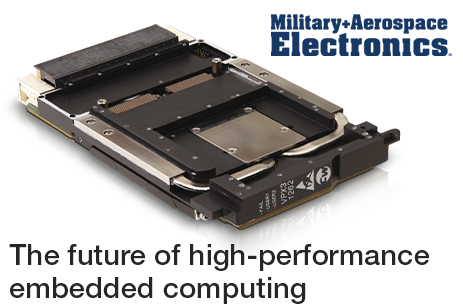
Published in Military & Aerospace Electronics
Written by John Keller
State-of-the-art processors, fast networking and data sharing, open-systems standards, innovations in cooling and thermal management, and new systems architectures are converging on high-performance embedded computing systems to create new enabling technologies in real-time processing, artificial intelligence (AI), and machine learning for applications in image recognition, radar, electronic warfare (EW), signals intelligence (SIGINT), and more.
While these innovations promise new aerospace and defense capabilities that are almost beyond the imagination, these technologies also confront systems designers with challenges in packaging for small size, weight, and power consumption (SWaP), electronics cooling, and data security, and also threaten to outstrip expected new advantages in open-systems standard ecosystems sooner, rather than later.
Much of the innovation in high-performance embedded computing starts with microprocessors, which range from central processing units (CPUs), field-programmable gate arrays (FPGAs), general-purpose graphics processing units (GPGPUs), analog-to-digital (A/D) converters, and digital-to-analog (D/A) converters.
"We have scalable processors, which are targeted at the data centers," explains Denis Smetana, senior product manager at the Curtiss-Wright Corp. Defense Solutions segment in Ashburn, Va. "These are really high power, and difficult to cool. Yet Intel has second-tier processors called the Xeon D family that have server-like performance, but that are targeted at the embedded market." The Curtiss-Wright CHAMP XD-4 embedded processor is one example of this.